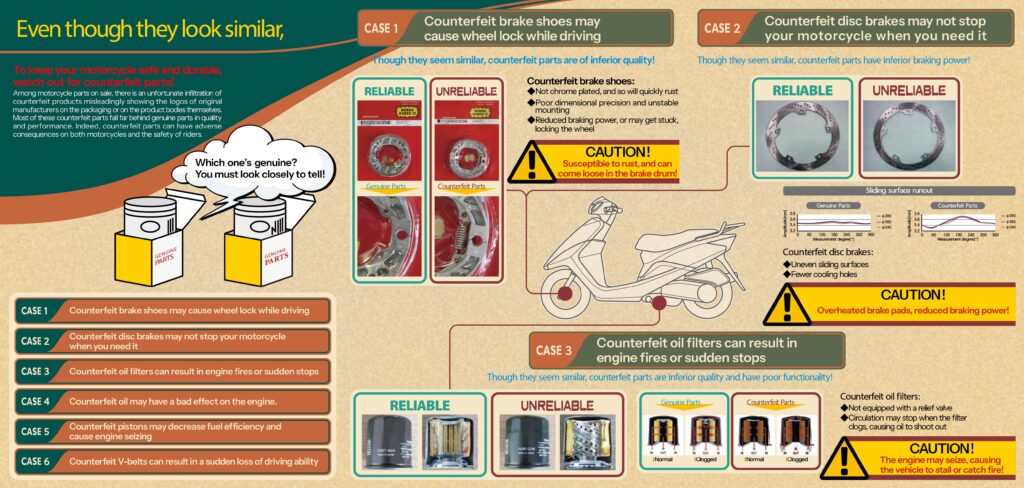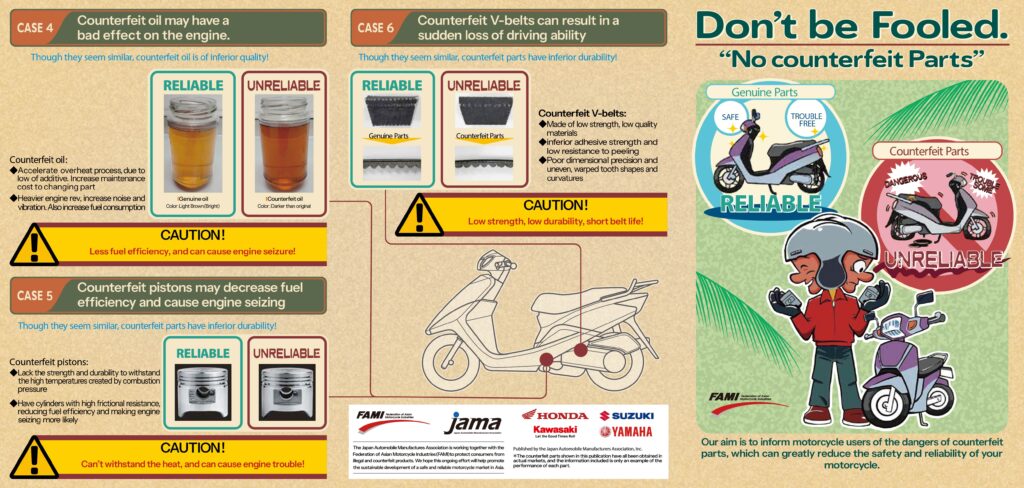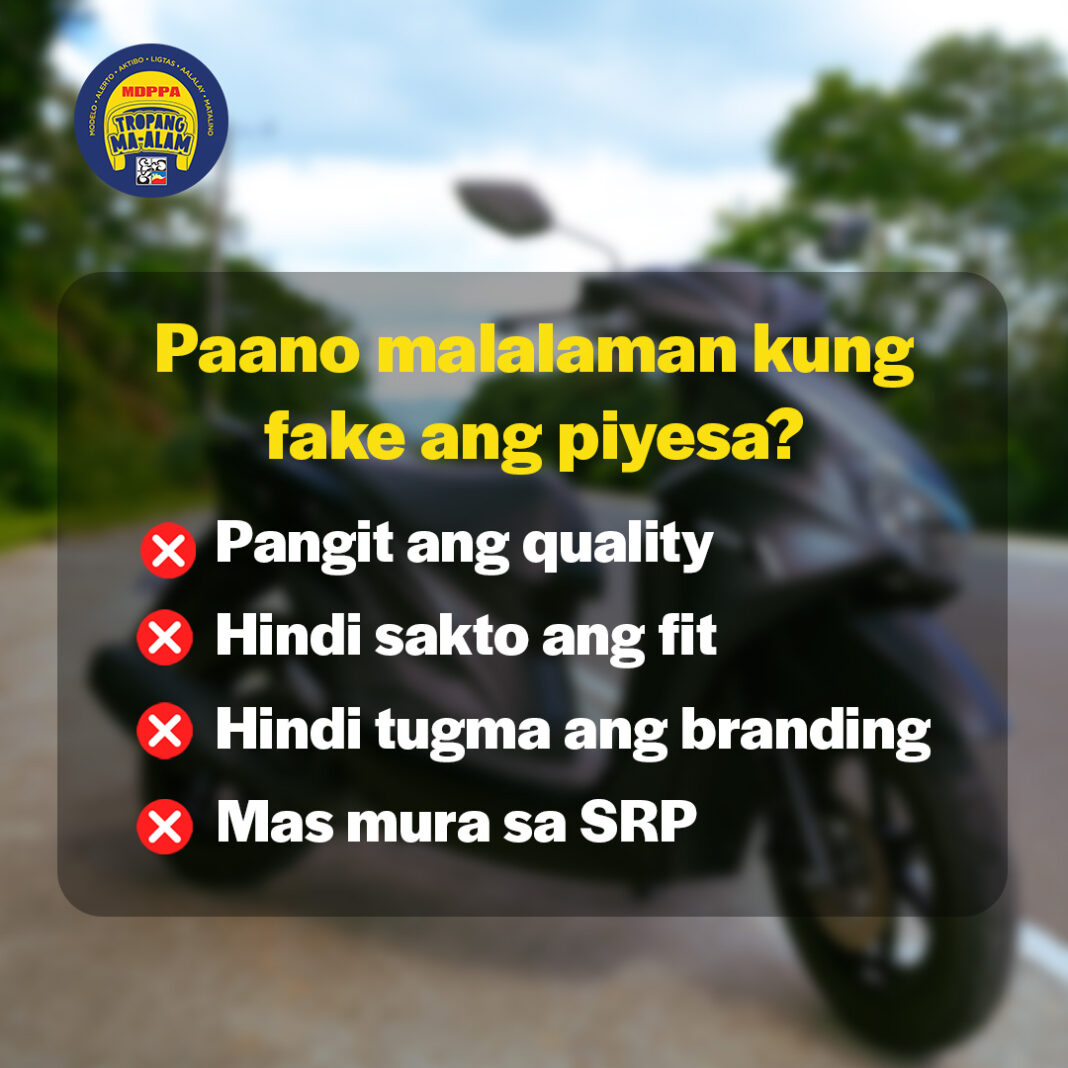Motorcycles are more than just a mode of transport. They’re our trusted partners on the road, and just like any trusted companion, it’s only right that we provide them with the best care possible. Whether it’s for maintenance, repairs, or upgrades, using genuine parts is essential to keeping your bike performing at its best while also ensuring your safety.
But shopping around for replacement parts can be a daunting task. To help our Tropang MAALAM folks navigate the challenges of finding the right pieces for their motorcycle, we created a quick guide to make it easier for them!
Why choose genuine motorcycle parts
First, why choose genuine parts? Genuine parts are manufactured or approved by your bike’s original manufacturer. These parts are designed to match your motorcycle’s specifications exactly.
Here’s why they matter:
- Perfect fit and function – Genuine parts are originally designed to work seamlessly with your bike’s systems. This reduces the risk of malfunction or poor performance.
- Longer lifespan – Because they’re made with quality materials and tested thoroughly, they last longer than knock offs or low-grade imitations.
- Maintains warranty – If your bike is still under warranty, using non-genuine parts might void it. OEM parts help keep that protection in place.
- Better safety – Faulty or poorly made parts can compromise your braking, handling, or fuel efficiency, putting you and others at risk.
- Resale value – Bikes with a documented history of genuine parts usually fetch a better price on the second-hand market.
How to spot fake vs. genuine parts
The motorcycle parts market can be tricky to navigate. Counterfeit parts often look convincing but fail in performance or safety, which is why it is very important that you know the difference.
Spotting the difference:
- Check the packaging – Genuine parts usually come in branded, sealed packaging with clear labeling, barcodes, and product numbers. Fakes may have blurry logos, misspellings, or inconsistent fonts.
- Inspect the part itself – Look for clean finishes, proper serial numbers, and high-quality materials. Fake parts might feel lighter, have poor machining, or lack branding altogether.
- Beware of too-good-to-be-true prices – Deep discounts can be a red flag. Genuine parts typically have consistent pricing across authorized sellers.
- Buy from trusted sources – Stick to official dealers, service centers, or verified online platforms. Avoid informal markets or unverified resellers.
- Ask for certification – Authorized dealers will often provide proof of authenticity or paperwork. If the seller can’t explain the origin, proceed with caution.


Replacing vs. upgrading parts
Not all parts that need changing are broken, some are upgraded for performance, comfort, or style. But it’s important to know when to replace and when it’s okay to upgrade.
Replacing parts:
- Critical parts like brake pads, chains, sprockets, tires, and filters must be replaced with genuine or OEM-quality parts. Your safety depends on their reliability.
- For electrical components (e.g., spark plugs, sensors), always opt for genuine to avoid malfunction or even engine damage.
Upgrading parts:
- Upgrades like LED lights, exhaust systems, or suspension kits can enhance performance or aesthetics, but make sure they’re compatible with your bike’s model.
- Choose well-reviewed aftermarket brands and consider professional installation to avoid fit or wiring issues.
Remember, modifications may affect your insurance or warranty, so always check first.
Some useful tips when buying used parts
Buying used or surplus parts can be practical, especially for older bikes. But it comes with risks, so approach it with a critical eye.
Tips to shop smart:
- Buy from a reputable seller – Whether online or in person, look for trusted sources with clear return policies and honest reviews.
- Inspect the part closely – Look for cracks, rust, excessive wear, or any signs of poor storage. If possible, test mechanical parts before buying.
- Know the part’s history – Ask how long it’s been used and why it was removed. Avoid parts taken from damaged or totaled bikes.
- Avoid used wear-and-tear items – Brake pads, bearings, seals, filters, and chains are best bought new, even if they seem in good condition.
- Cross-check compatibility – Make sure the part is designed for your exact model and year. Even small variations can cause major issues.
In summary, choosing genuine motorcycle parts is crucial for not only ensuring your bike’s performance and longevity, but also your safety as a rider. Being able to tell the difference between real and fake parts can also help you avoid costly mistakes, while understanding when to replace versus upgrade ensures you make the right decisions for both function and style. And if you’re considering used parts, a careful, informed approach can help you save money without compromising quality.
At the end of the day, your motorcycle deserves nothing less than parts that match its build, because every ride depends on it.




